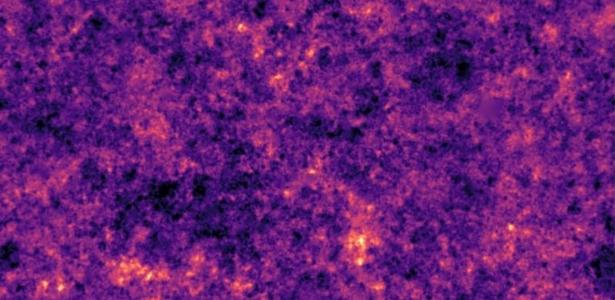The new discoveries show differences in the concentration of dark matter in relation to what prevailing theories predicted; Some scientists claim that cosmology may enter a whole new territory.
An international team of researchers has created the largest and most detailed distribution map of the so-called dark matter in the universe.
The results are surprising because they show that this is much softer and more ubiquitous than the best valid scientific theories anticipated.
These observations, published by the Dark Energy Survey Collaboration, appear to deviate from what Albert Einstein had predicted in the general theory of relativity, creating a puzzle for the researchers.
Dark matter is an invisible substance that permeates space. It accounts for 80% of all matter in the universe.
Astronomers were able to find out its location thanks to the fact that it distorts the light of distant stars. The greater the distortion, the greater the concentration of dark matter.
For researcher Niall Jeffrey, from Ecole Normale Superior, from Paris, who prepared a dark matter map with 400 scientists from 25 institutions in seven countries, he explained that the results obtained from the project led to the creation of a “real problem” for physicists.
He told BBC News: “If this disparity was correct, then maybe Einstein was wrong.” “You might think this is a bad thing, maybe the physics has been destroyed. But for a physicist, this is very exciting. It means that we can discover something new about what the universe really looks like.”
Professor Carlos Frenk, from Durham University (England), one of the scientists who supported Einstein’s work to develop the current cosmological theory, says he has mixed feelings about the new map of dark matter.
He said, “I spent my life working on this theory, and my heart tells me I don’t want to see it collapse.” “But my mind is telling me that the (new) measurements are correct, and we have to look at the possibility of new physics.”
Frink added that the challenge, if the new findings are confirmed, “is that we do not have a solid basis to explore it, because we do not have a theory of physics to guide us. This makes me feel very nervous and afraid, because we are entering a completely new field, and you will know what we will find.”
Notes
Using the Victor M Blanco Telescope, located in Chile, the Dark Energy Survey Collaboration team analyzed 100 million galaxies.
The map shows how dark matter has spread across the universe. Dark areas are vast areas with absolutely nothing, called voids, where the laws of physics can be different.
The lighter areas are where the dark matter is concentrated. They are called “halo” because our reality is in their midst. Between them are galaxies like our own, the Milky Way, which shine like little jewels on a vast cosmic web.
According to Geoffrey, who is also a faculty member at University College London, the map clearly shows that galaxies are part of a larger, invisible structure.
“No one in human history has been able to look into space and see the location of dark matter in the extension (which is what has been done now),” Jeffrey said. “Astronomers have been able to put together images of the tiny bits, but we have detected large new strips showing a lot of this structure. For the first time, we were able to see the universe differently.”
The point is that the new dark matter map doesn’t show exactly what astronomers expected. They have an accurate idea of the matter distribution, 350,000 years after the Big Bang, from an analysis by an ESA observatory called Planck. He measured the radiation still remaining from that moment, the cosmic background radiation, which is called the microwave, or more poetically, “the splendor of creation.”
Building on Einstein’s ideas, astronomers like Carlos Frenk developed a model to calculate how matter was scattered over the next 13.8 billion years until today. But the observations made now differ from those in small proportions.
As a result, Frenk believes that there may be big changes taking place in our understanding of the universe.
“We might have discovered something really basic about the fabric of the universe,” he said. “The current theory is based on concrete pillars made of sand. What we can see now is the collapse of one of these pillars.”
But others, such as Professor Ofer Lahav of University College London, take a more conservative view.
“The big question is whether or not Einstein’s theory is perfect. It seems to have passed all the tests, with some variations here and there. The astrophysics of galaxies may only need some adjustments. In the history of cosmology, there are examples of problems that have gone through, but also problems. That changed the way of thinking, and he said it would be great to see if the current “tension” in cosmology will lead to a new paradigm shift.

“Incurable thinker. Food aficionado. Subtly charming alcohol scholar. Pop culture advocate.”






More Stories
NASA Releases Selfie of Perseverance Rover Working on Mars
NVIDIA driver includes hidden Final Fantasy XVI profile
PlayStation Plus Extra and Premium saw a significant drop in players in July